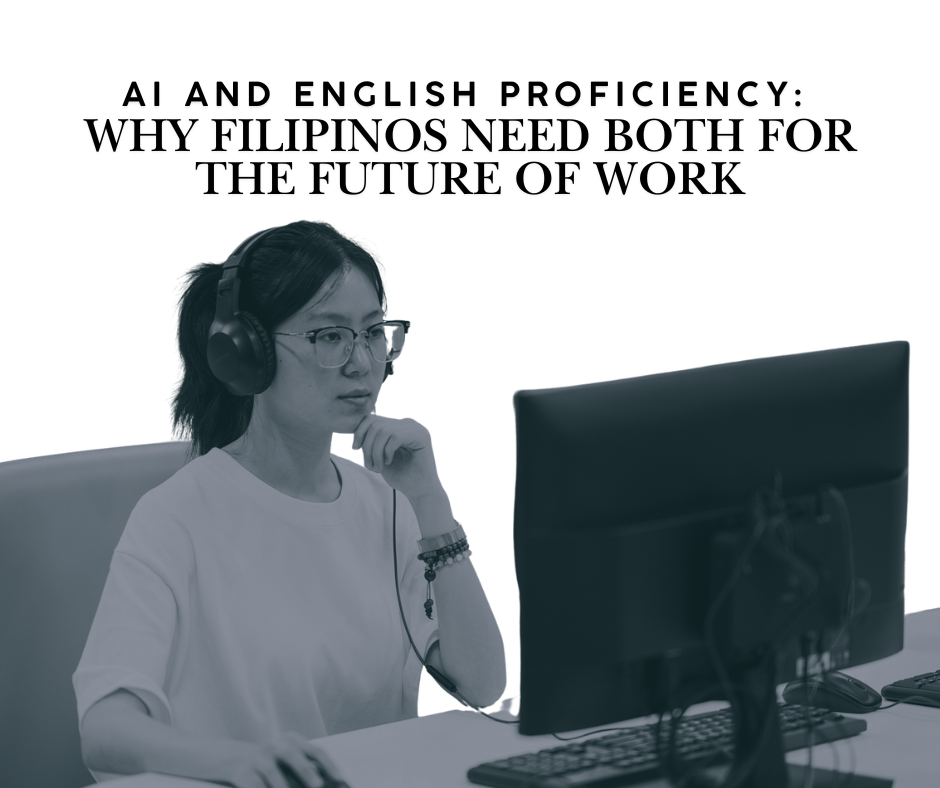Living in the Philippines, a bilingual country, Filipinos enjoyed longtime advantage when it comes to the international job aspects thanks to the country’s colonial history. Now, it becomes easier with AI, everything that we need for work is just one click away and in one prompt, all the information will be just right in front of you. As a skill credential, competency in English proficiency is one of the important requisites in the workforce; serving as a bridge between education and workforce readiness.
Why English Proficiency Still Matters
Before entering the global workforce, many Filipinos and job seekers worldwide are taking TOEIC link as an assessment of their English proficiency to determine their readiness for global job market. Developed by the Educational Testing Service (ETS), the Test of English for International Communication (TOEIC) link measures English-language proficiency across any or all four communication skills – listening, reading, speaking and writing. Using this link, it can be used to optimize English language training and recruit the right talent.
According to ETS, TOEIC link is used in over 100 countries and relied upon by 14,000 organizations worldwide, making it one of the most trusted indicators of workplace communication skills. But with AI becomes increasingly central to workplaces, how does English proficiency stay relevant and become more important in the advanced era of technology?
AI Needs Good Prompts, and Prompts Need Good English
In an exclusive online interview with Pushkar Saran, Executive Director for Southeast Asia and South Asia region at Educational Testing Service (ETS), he discussed how AI and English proficiency can both harmonize with each other for workplace demands globally.
“To use AI, you need English proficiency because if you cannot give good prompts, you will not be able to get good results. Secondly, I think the way we are talking, communication drives connection, not just output. AI can generate words, but only humans can convey empathy, context and cultural nuance. Now those qualities are vital in the Philippines service and BPO industries,” he said.
This matters especially in the Philippines’ IT-BPM sector, which employs nearly 2 million workers—most of whom rely on English for global client communication.
The Workforce Is Changing Its Shape
As AI enters the workplace, it also changes the structure of the workforce. In traditional times, the workforce resembles like a pyramid: the bottom part is the entry-level workers, the middle layer is composed of supervisors, specialists and lastly, the top part: executive and strategic leaders who make high level decisions.
But with AI that slowly takes over the low-level tasks, the usual shape of workforce transforms from usual pyramid to diamond. Somehow, people became threatened at the thought of job extinction, but on second thought, AI will not replace humans but help humans to lessen the workload. Hence, the workers at the bottom often perform routine tasks face automation. Meanwhile, demand increases in the middle layer for specialists who can operate, supervise, and collaborate with AI systems.
Instead of replacing humans, AI shifts human labor upward, requiring higher skills, better communication, and stronger analytical abilities. In this case, AI will complement, not replace, human work.
According to 2025 ETS Human Progress report, AI was viewed as a critical tool by HR decision-makers for complementing human skill set of employees that will influence skill needs of the future. Statistics showed that AI will create a new set of skills that doesn’t exist today yet will be needed by the employees in the future to become competitive.
Therefore, English proficiency helps with AI for filling the growing number of mid-skilled roles.
Where AI Meets English Proficiency
The rapid advancement of technology drives people to innovate and adapt, which includes AI’s evolution quickly, so are the global assessments. ETS administers more than 6 million TOEIC tests annually, and in 2025, they launched TOEIC Link—an AI-powered modular version—in eight countries: Spain, Indonesia, Mexico, Brazil, UAE, KSA, India and the Philippines.
This AI-assisted test is designed to deliver results efficiently within 30 minutes, offering online testing options that emphasize accessibility and data security through AI-based remote proctoring. It provides CEFR-aligned scoring to give standardized insights into language proficiency and maintain international consistency.
To offer a more flexible online assessment method for evaluating English skills, this modular TOEIC Link includes three AI-driven components: AI adaptive, AI-score, and AI proctor.
These developments are intended not to diminish human involvement, but to integrate AI with human assessment expertise, making English testing more accessible and time-efficient while maintaining established evaluation standards.
As AI continues to shape global industries, English proficiency remains the bridge that connects technology with human understanding — a partnership that defines the future Filipino workforce.
From the words of Dir. Saran, “AI may power the tools of tomorrow, but it’s human communication—clear, credible, and empathetic—that powers progress. At ETS, we believe in building that partnership: technology to assist, and people to inspire.


